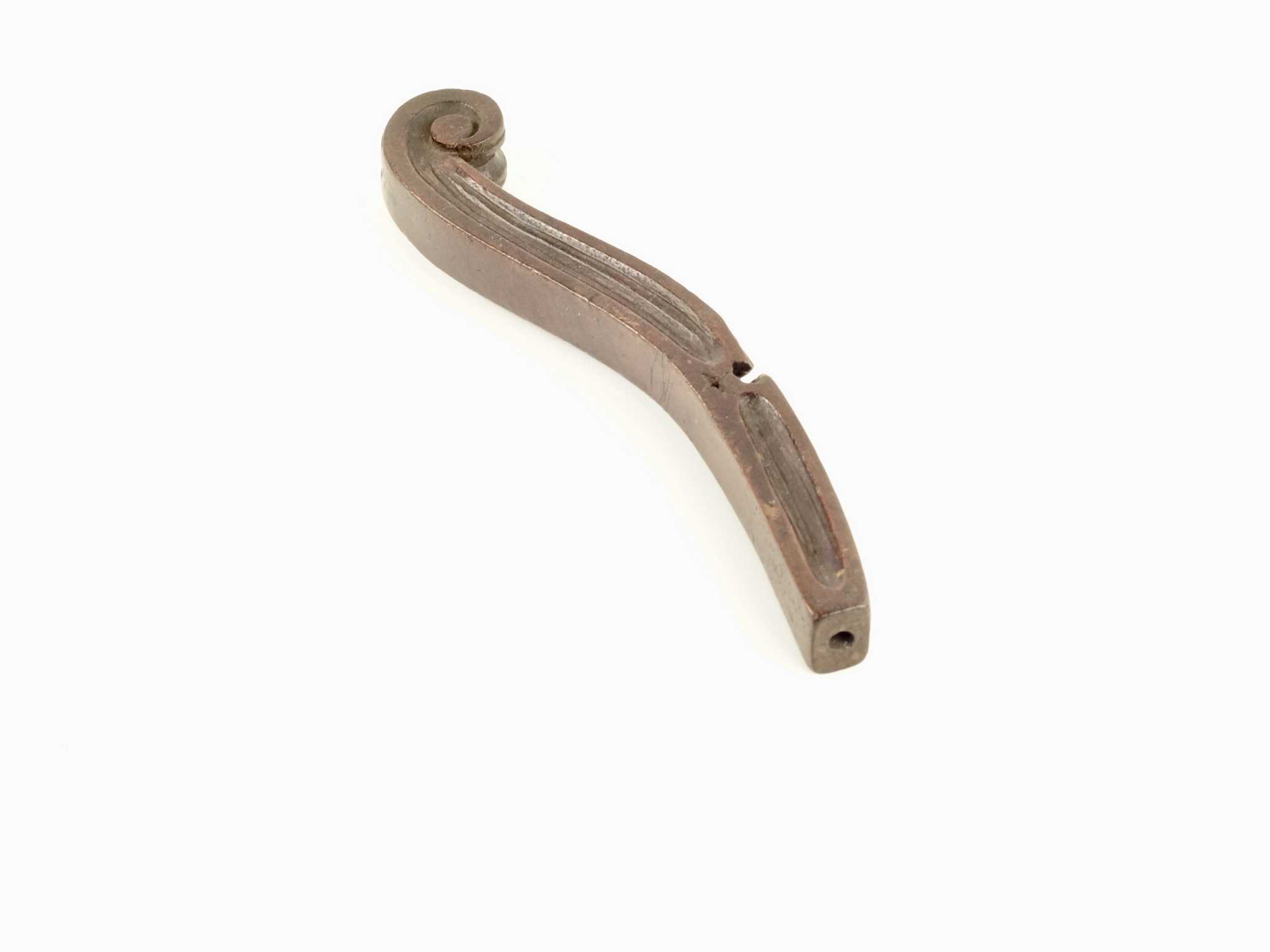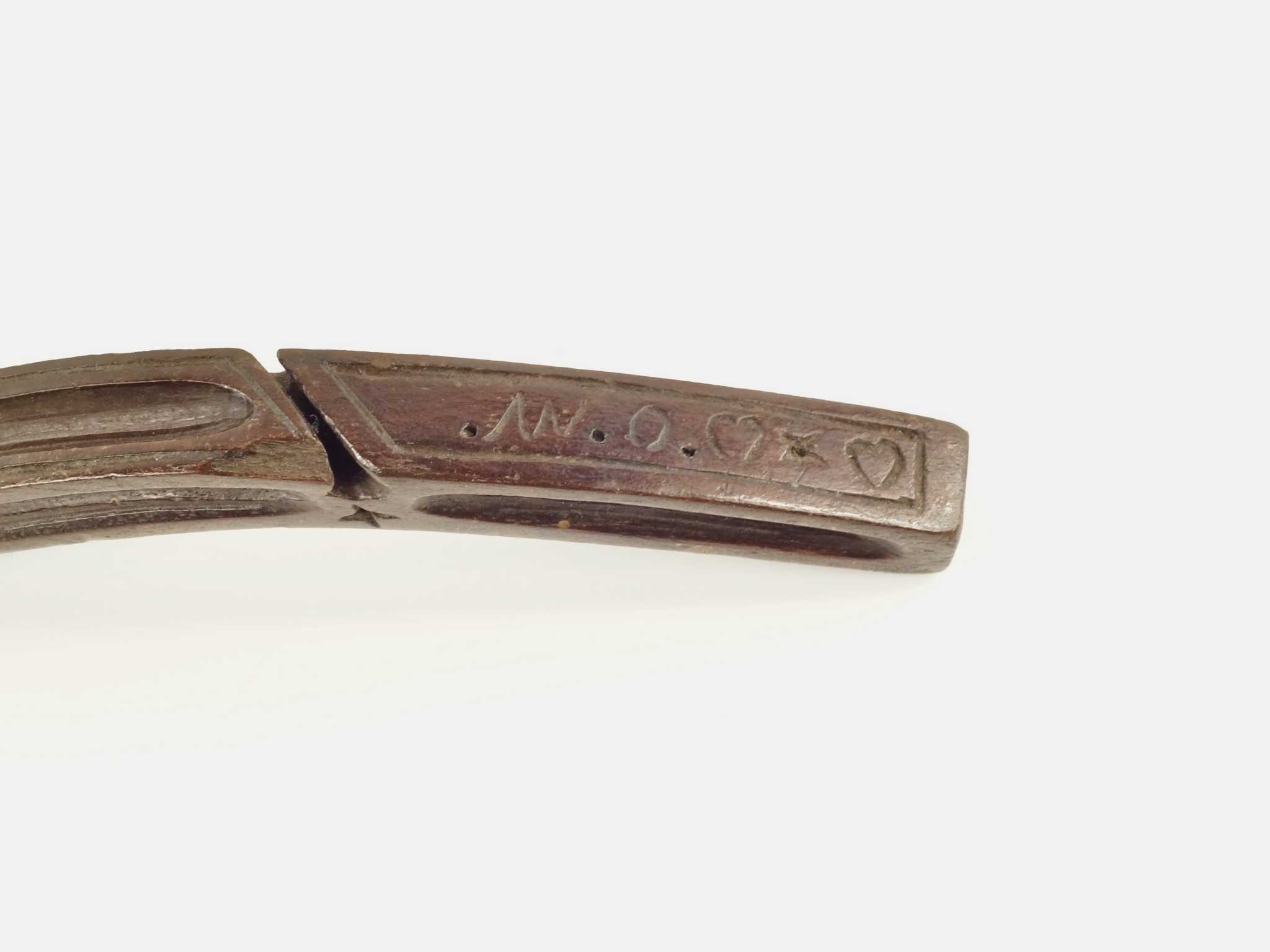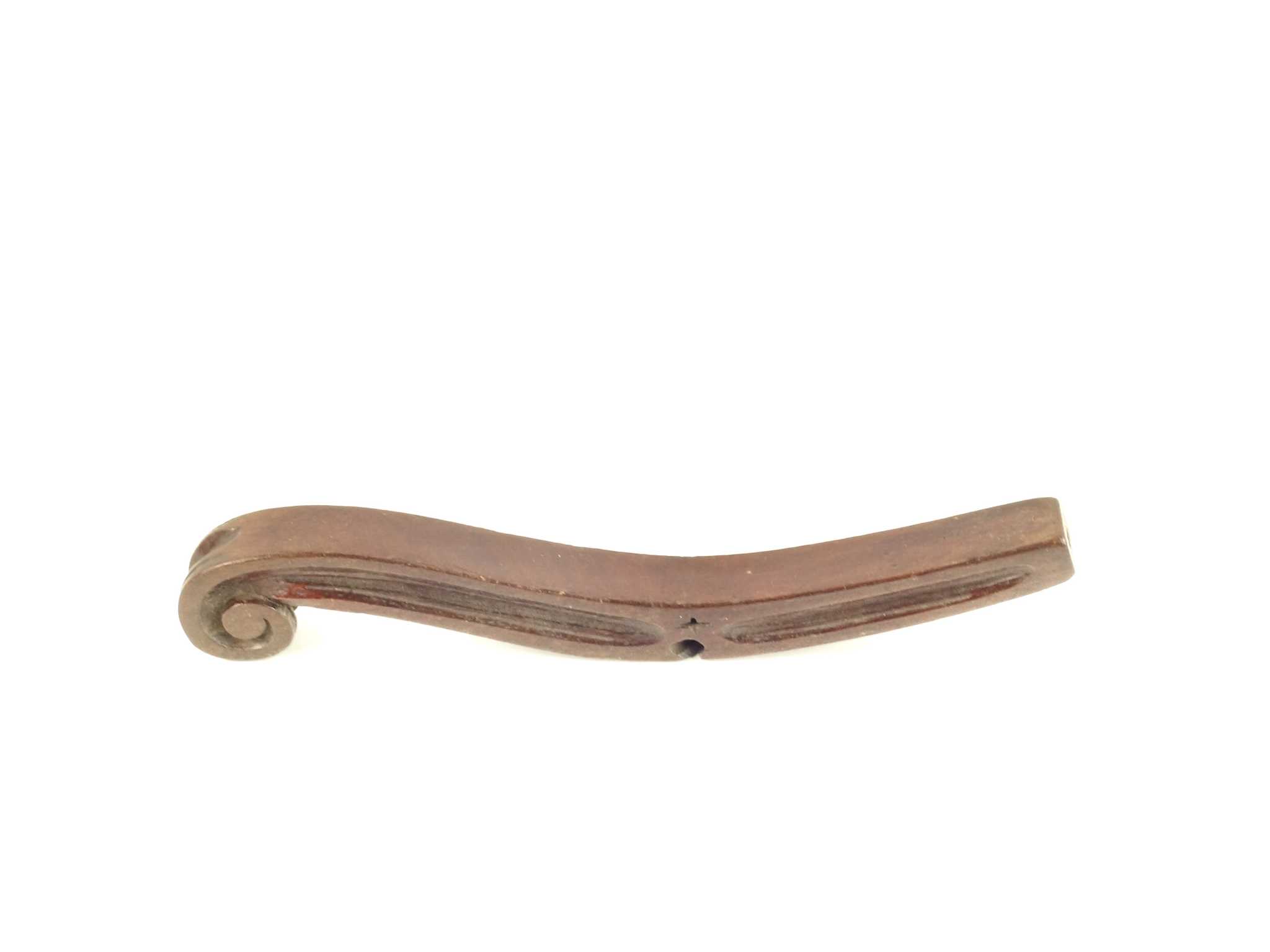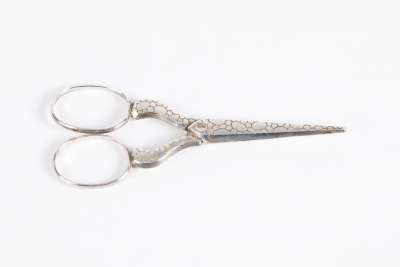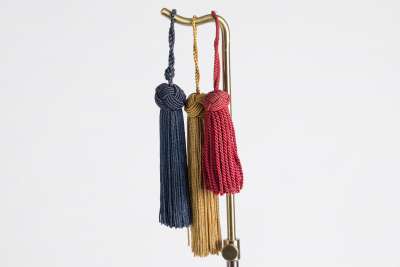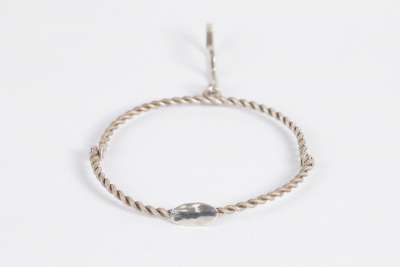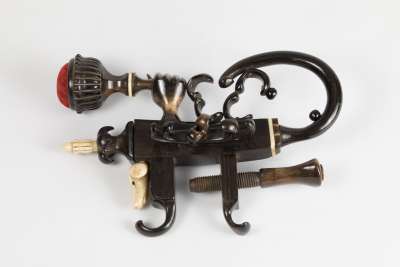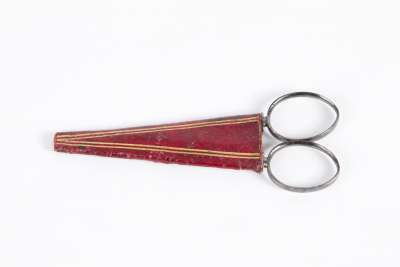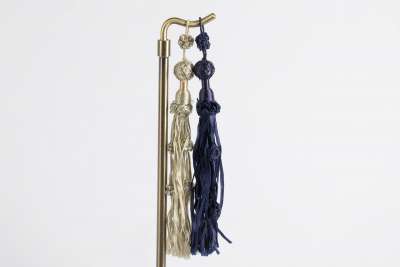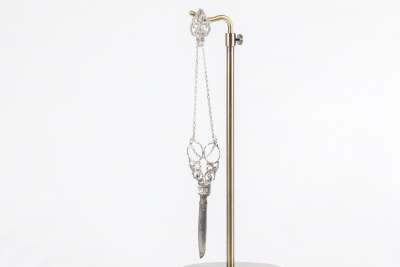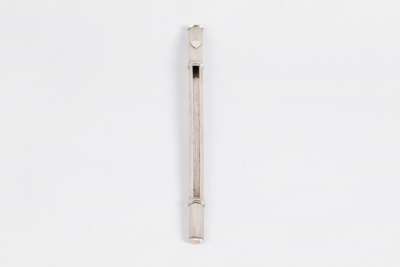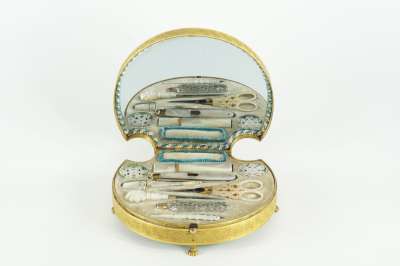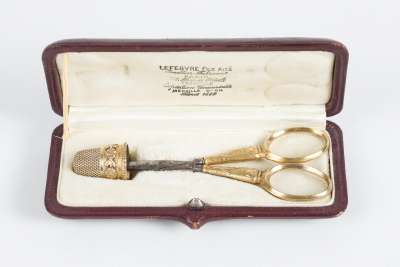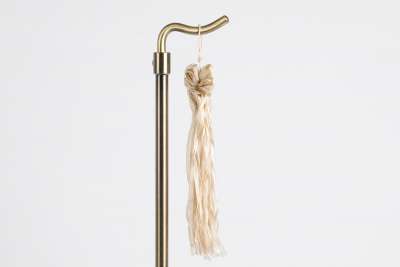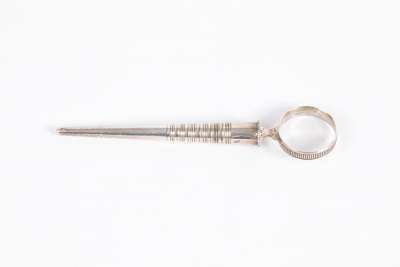This antique knitting needle sheath originates from County Durham in the United Kingdom and is crafted from mahogany. Dating back to around 1840, it features a square, curved, and tapered form, complete with a hook at one end. An oblique slot across the face is designed to accommodate an apron string, demonstrating its functional design. The upper stem showcases naive engravings that include initials, a horseshoe, a star, and hearts, adding a personal touch to its historical appeal.
Condition Report
The knitting needle sheath is in very good condition, displaying wear that is consistent with its age and the use it has seen over nearly two centuries. The mahogany wood has developed a patina, indicative of its historical journey and period of usage. The engravings remain visible, although they are softened by the passage of time. The hook at the end remains intact, and the oblique slot shows signs of frequent use, which is expected in items of this vintage. The overall structure is sound, with no significant damages or repairs noted.
Dimensions
Weight: 25gm, Length: 8cm, Width: 1.6cm.
A Knitting Companion
This wooden sheath was likely used as a knitting aid, serving as a practical tool for knitters. It would have been worn at the waist, secured by an apron string through the oblique slot, allowing the user to hold one of the knitting needles steady. This enabled knitters to work more efficiently, particularly useful in the production of tight or intricate stitches. Such tools were common in the 19th century, facilitating the craft of knitting in domestic settings.
Naive Folk Art Design
The design of this knitting needle sheath reflects the naive folk art style, characterized by its simplicity and use of personal motifs. The engravings, including the horseshoe, star, and hearts, are emblematic of the personalisation typical in folk art. These symbols may have had personal significance to the original owner, serving as good luck charms or expressions of personal values and beliefs. This style was prevalent in rural communities, where such items were not only functional but also carried sentimental value.
Traditional Woodcraft Techniques
This knitting sheath was crafted using traditional woodcraft techniques of the 19th century. Mahogany, a durable and easy-to-carve wood, was likely chosen for its workability and attractive grain. The engravings were probably done by hand, using simple tools, indicative of the artisan skills of the period. The shaping of the sheath into its tapered form would have required careful hand-carving, ensuring both functionality and comfort for the user.
Crafted by Local Artisans
While the exact maker of this knitting needle sheath is unknown, it is likely the work of a local craftsman from County Durham. Such items were often produced by skilled artisans who catered to the everyday needs of their communities. The personal engravings suggest a close connection between the maker and the user, potentially commissioned or crafted as a bespoke piece. This reflects the historical context where craftsmanship was a valued and integral part of daily life.
Collected by Enthusiasts of Historical Tools
Knitting needle sheaths such as this one are collected by enthusiasts interested in historical tools and domestic artefacts. They offer insights into past lifestyles and the evolution of knitting as a craft. Collectors are drawn to their functional design, historical significance, and the personal stories they embody. As tangible links to the past, these sheaths provide a window into the everyday lives of 19th-century communities, making them a valued addition to any collection of antique sewing and knitting tools.
